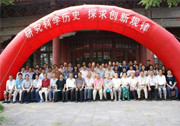| 英文摘要: |
In ancient Chinese shipbuilding culture, the tradition of "hole in the keel" was digging holes in the keel, in which coins or other lucky charms were put in order to pray for safe sailing. The European shipbuilding industry had the tradition of "coin under the mast" since ancient Rome, which means to place coins and other lucky charms in the mast step to pray for luck. This paper compares the types, positions and evolution of the lucky charms in ancient China and Europe, and concludes that the similarities between them are due to the long-term marine cultural exchanges. The tradition of "hole in the keel" should originate from the architectural custom of "coin in the beam" in inland China. This paper holds that both ancient China and Europe have the habit of placing coins or lucky charms in tombs and buildings, which is the cultural basis for placing similar objects on sea ships. |








